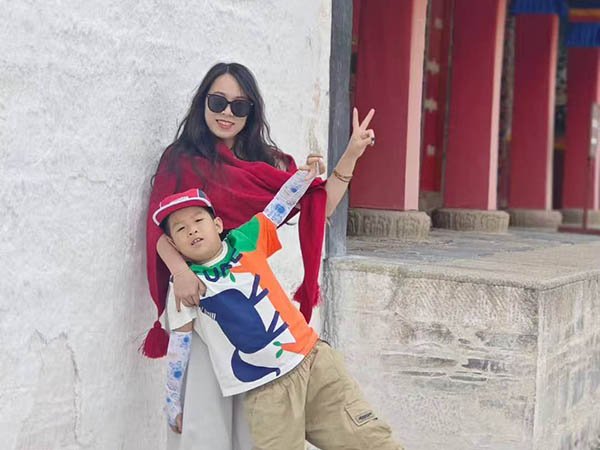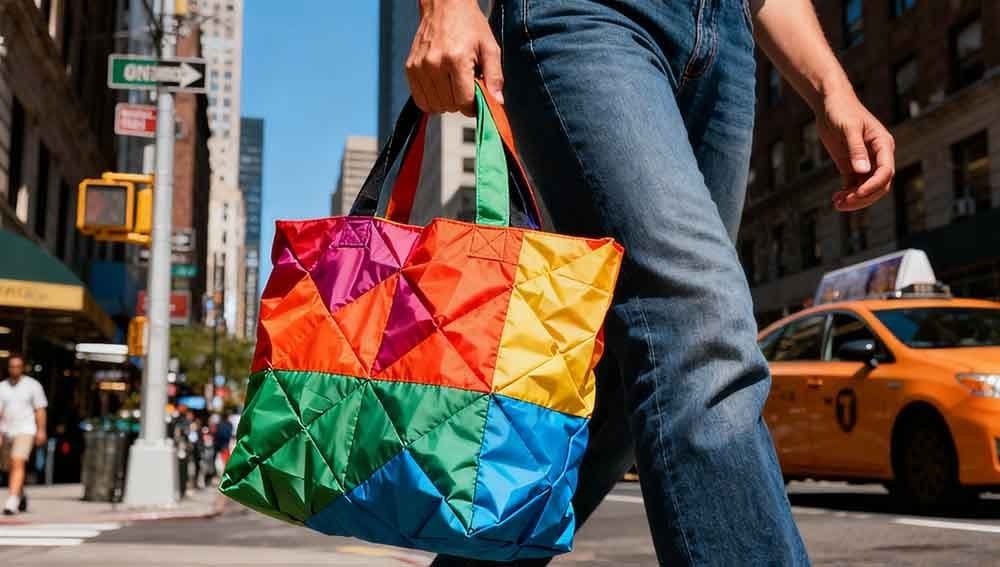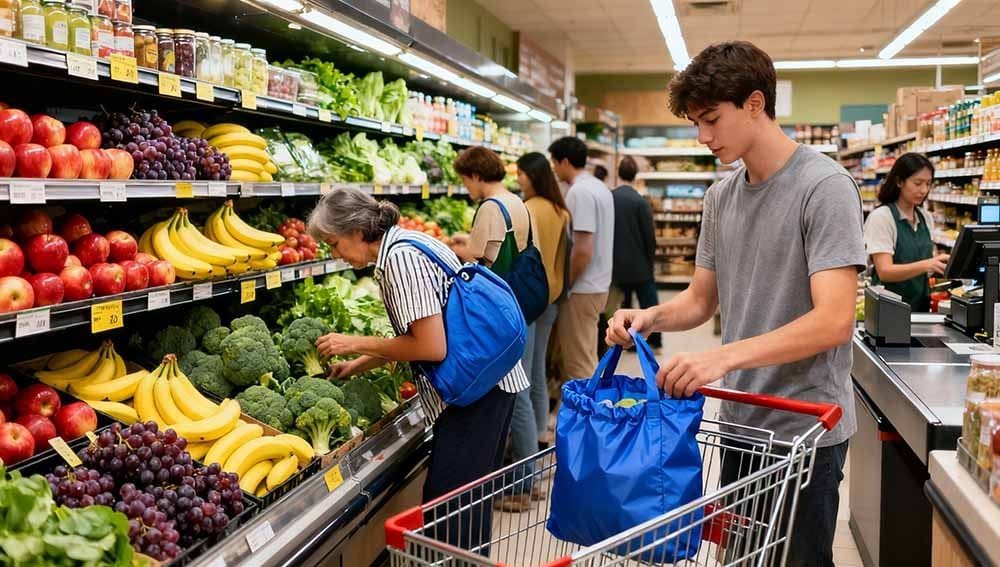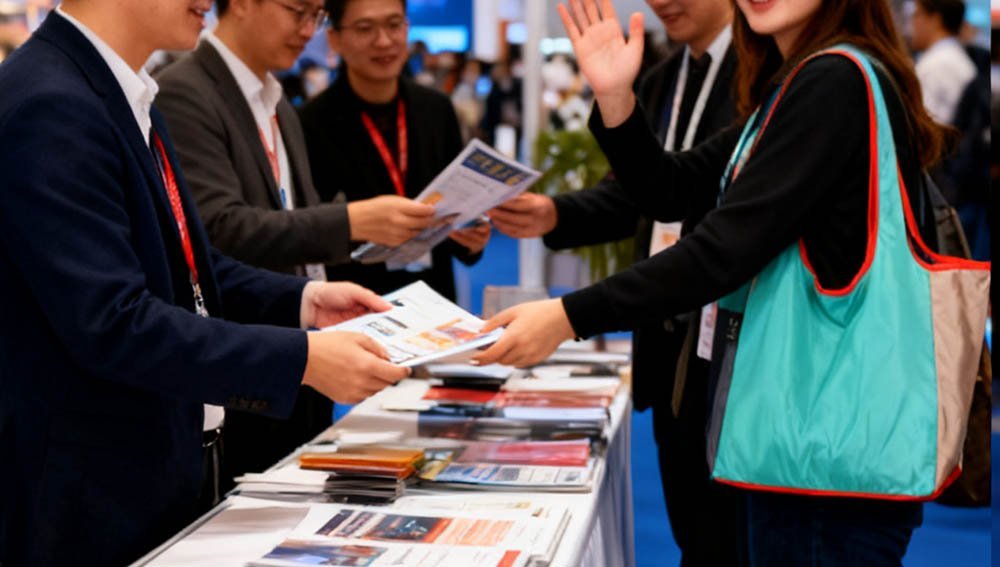Many brands struggle to make their marketing materials stand out. Standard promotional items often get forgotten or tossed aside. Creative foldable bag designs offer a unique and lasting solution.
Creative foldable bag designs help brands stand out by transforming simple bags into memorable marketing tools. These designs blend utility with aesthetic appeal, encouraging frequent use and turning each bag into a mobile advertisement that effectively communicates brand values and promotes environmental consciousness.
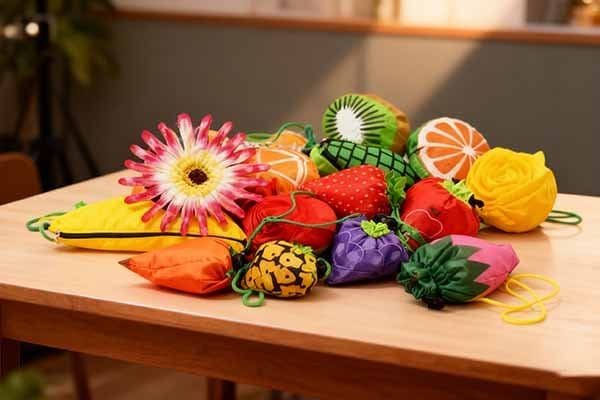
Let’s explore how thoughtful design transforms an everyday item into a powerful brand ambassador. This approach turns simple fabric into a statement of style and sustainability. It resonates with customers and drives engagement in meaningful ways.
Why Do Brands Use Foldable Bags for Marketing?
Brands need cost-effective ways to get noticed. Traditional advertising can be expensive and fleeting. Foldable bags offer an eco-friendly, portable, and high-exposure marketing option.
Brands use foldable bags for marketing because they combine environmental benefits with portability and high visibility. These bags serve as practical, low-cost promotional items that users carry frequently, making them effective mobile advertisements that reinforce brand messaging and sustainability efforts.

Brands choose foldable bags for marketing for very clear reasons. These bags are not just simple containers; they become moving advertisements for the brand. They offer a strong blend of environmental responsibility, easy portability, and low production costs. Yet, they deliver very high brand exposure.
The true value often comes from creative design. A well-designed foldable bag is much more than just a bag; it effectively carries the brand’s ideas and greatly improves the user’s overall experience. This approach helps brands truly stand out in today’s very crowded market.
When a bag looks good and works well, people are naturally more likely to carry it often. This turns the bag into a form of free advertising, always visible to others. Modern brands also increasingly use eco-friendly materials such as recycled PET (RPET) or recycled nylon.
This allows them to weave "sustainability" directly into their brand story, clearly showing their values to customers. Such thoughtful design makes the bag a regular part of daily life, keeping the brand consistently in mind.
Customizable foldable totes, for instance, offer light and practical options. Brands can add their logos and creative designs using techniques like silkscreen or sublimation printing. These bags are perfect for special events or ongoing promotions, easily folding into small pouches for convenient carrying.
How to Add Creativity to Foldable Bag Designs?
Generic foldable bags might not grab attention. A plain bag can easily get overlooked in today’s crowded market. Infusing creativity into design elements makes foldable bags truly memorable.
Creativity in foldable bag designs comes from unique printing ideas, thoughtful material choices, and innovative shapes that reflect brand identity. These elements transform a basic utility item into a captivating accessory, encouraging frequent use and boosting brand recognition.

Adding creativity to foldable bag designs makes them powerful brand tools. It helps brands connect with customers in a deeper and more lasting way.
Clever Printing Techniques Make Bags Stand Out?
Printing ideas can make a bag truly eye-catching. Some food brands, for example, design their foldable bags to look exactly like specific fruits when folded. This draws immediate attention and makes the bag fun and unique.
Other bags can tell a compelling story through their prints or feature artistic designs that capture the eye and spark curiosity. These creative prints transform a simple bag into a conversation starter, making it more memorable.
The print can be bold and vibrant or subtle and elegant, as long as it effectively connects to the brand’s overall message. Smart designs can also use advanced elements such as RFID tags or QR codes directly integrated into the print or fabric.
These features can track usage patterns or link directly to digital product information, adding a modern, tech-savvy touch that enhances engagement. The goal is to make the bag not just useful, but also an appealing visual element that reflects the brand’s distinct personality.
How Do Material Choices Impact Design and Purpose?
Material choice greatly shapes both the bag’s design and its intended purpose. If a brand operates on a limited budget and aims for widespread promotion, regular polyester bags with a simple logo can be highly effective for reaching a broad audience.
For eco-conscious brands, RPET (recycled PET) is an excellent choice. This material is both environmentally friendly and remarkably sturdy. It allows for simple logo printing or even more intricate, artistic designs, aligning with green initiatives.
For a higher quality feel and enhanced features, nylon offers excellent waterproof properties, increased strength, and a softer texture. Hybrid materials can also combine fabric with flexible film layers or coated composites. This balances water resistance with essential foldability and structural resilience.
Lightweight yet highly durable fabrics, such as ripstop nylon or crease-resistant polyester, are also preferred. They maintain their folding ability without any compromise in performance or longevity. The table below illustrates how different materials can best meet varying brand needs and design objectives.
| Materiale | Key Benefit | Design Potential | Value Proposition |
|---|---|---|---|
| Poliestere | Cost-effective, lightweight | Basic prints, simple logos, mass promotions | High volume, low cost, broad reach |
| RPET (Recycled) | Eco-friendly, durable, sustainable | Detailed prints, brand values, green initiatives | Environmental commitment, responsible consumption |
| Nylon (Ripstop) | Waterproof, strong, soft feel | High-end appeal, tech features, vibrant colors | Premium feel, durability, weather resistance |
| Hybrid Materials | Water resistance, foldability | Specialized functions, unique textures, advanced uses | Innovation, tailored performance, modern functionality |
What Innovative Shapes and Folding Styles Work Best?
Innovative shapes also make bags truly unique and memorable. For instance, a candy store might design a bag that ingeniously folds into the shape of a piece of candy. Similarly, an organic vegetable shop could create bags shaped like specific vegetables or fruits, such as a carrot or a tomato.
Clothing stores can design bags that look like neatly folded garments. For holiday promotions, bags can be specially shaped like pumpkins for Halloween, spiders, or festive Christmas trees and socks for the winter season. These creative ideas transform a simple bag into something special and fun.
Designers also increasingly use origami-inspired folding patterns. These intricate patterns allow bags to transform their shapes or collapse neatly into a compact form. Some designs even feature modularity, enabling them to change from a basic tote bag to a crossbody bag or even a clutch.
Features like internal stuffing pouches or button-up closures make bags highly compact. Magnetic or snap buttons further simplify the process of easy folding and unfolding.
Reinforced seams and durable zippers are crucial. They maintain the bag’s structural shape and load capacity even after repeated folding. Some designers even use welded or seamless construction. This reduces bulk and ensures a smoother, more elegant folding behavior.
What Brand Examples Show Creative Foldable Bags?
Conceptualizing creative bag designs can be tough without real-world examples. It’s hard to visualize how these ideas translate into effective branding. Looking at successful brands can provide clear inspiration and practical lessons.
Successful brands demonstrate creative foldable bag designs by integrating them seamlessly into their marketing. Fashion retailers use printed totes, food brands offer logo mini-bags, tech companies employ minimalist eco-bags for events, and sports brands create multi-functional bags that embody their lifestyle.

Many brands successfully use creative foldable bags to boost their image and connect with customers. Fashion retailers, for example, often release special limited-edition printed foldable tote bags as part of a new collection or season. These bags quickly become stylish shopping bags or sought-after gift bags, effectively extending the brand’s aesthetic and creating a sense of exclusivity.
Food and beverage brands frequently give away small, mini foldable bags featuring their brand logo at events, tastings, or in-store promotions. These small, practical bags serve as tangible reminders of the brand long after the initial event.
Technology companies tend to use simple, modern designs for eco-friendly foldable bags. These bags are perfect as conference giveaways or welcome gifts for new employees. They reflect the company’s forward-thinking and sustainable values through their sleek design.
Sports brands, on the other hand, design multi-functional foldable bags that can be carried in various ways, such as a backpack, a duffel, or a cross-body bag. These versatile bags reinforce a healthy, active lifestyle. They often include specialized features like water bottle holders or separate shoe compartments.
Some even integrate tech features like USB ports or anti-theft zippers for added utility.
These examples clearly show how a seemingly simple bag can become a strong and integral part of a brand’s overall story and marketing strategy. These creative bags are not just mere giveaways; they seamlessly integrate into the customer’s daily life, becoming a practical and stylish extension of the brand.
Why Are Foldable Bags a Lasting Marketing Tool?
Marketing efforts often deliver only short-term results. Brands need tools that provide continuous value beyond the initial giveaway. Foldable bags offer a unique blend of eco-friendliness and creative marketing that endures.
Foldable bags remain a lasting marketing tool because they combine environmental consciousness with practical utility and creative potential. They transform into mobile advertisements when used by customers, effectively promoting a brand’s message and sustainable values for an extended period, far beyond a single campaign.
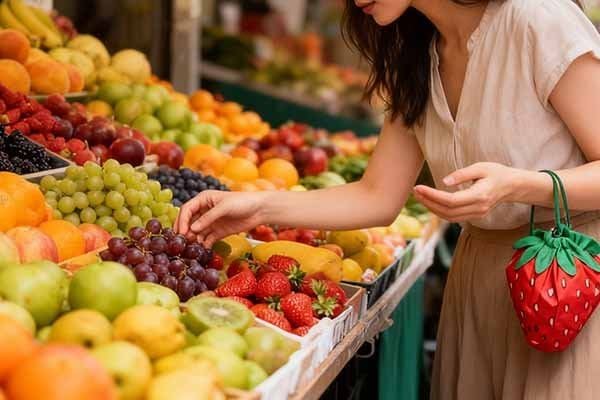
Foldable bags are a truly lasting marketing tool because they skillfully combine environmental responsibility with clever, creative design. This dual approach makes them exceptionally effective. They transform what might otherwise be a simple "freebie" into a powerful marketing instrument.
At the same time, they actively promote environmental awareness. This is a significant win-win situation for any brand aiming for a positive image.
Brands can integrate "sustainable" thinking directly into their design language. This makes the bag more than just a useful item; it becomes a clear statement of their core values.
At Avecobaggie, we deeply understand this principle. Our mission is to help businesses offer packaging that truly reflects their brand values. We provide sustainable, highly customizable bags. This actively helps thoughtful businesses grow and thrive.
The growing trend of using recycled materials such as recycled nylon or RPET appeals strongly to eco-conscious consumers. These bags become a visible and tangible commitment to environmental protection.
They carry the brand’s story and values directly into the hands and daily lives of users. This continuous and personal exposure makes creative foldable bags a very smart, long-term marketing investment that delivers ongoing returns.
Conclusione
Creative foldable bags are powerful marketing tools. They blend design, sustainability, and utility to tell brand stories, ensure lasting impressions, and turn users into brand advocates, proving their enduring value.
Frequently Asked Questions
Q: What industries benefit most from using creative foldable bags?
A: Retail, food and beverage, tourism, tech, and event industries benefit most because foldable bags combine practicality with strong visual branding that suits diverse audiences.
Q: How do foldable bags influence customer loyalty?
A: Unique foldable bags create emotional connections through repeated use, reminding customers of the brand daily and building stronger loyalty over time.
Q: Can foldable bags be used in luxury branding?
A: Yes, by choosing premium materials like ripstop nylon, metallic coatings, or limited-edition prints, foldable bags can support a high-end brand image.
Q: How do foldable bags compare to paper bags for branding?
A: Unlike paper bags, foldable bags are reusable, durable, and visible for months or years, making them more cost-effective long-term marketing tools.
Q: Are foldable bags suitable for seasonal campaigns?
A: Absolutely. Seasonal prints or themed shapes (like pumpkins for Halloween) make foldable bags ideal for holiday promotions and short-term campaigns with lasting effects.
Q: How can technology be integrated into foldable bags?
A: Brands can add QR codes, NFC tags, or augmented reality markers to foldable bags, connecting offline products with digital experiences.
Q: Do foldable bags appeal to eco-conscious consumers?
A: Yes, especially when made from RPET or recycled nylon, as they showcase a brand’s environmental responsibility while offering functional value.
Q: What role does packaging of foldable bags play in marketing?
A: Clever pouches, mini cases, or branded wraps add an extra layer of visibility and make the product more gift-worthy, enhancing perceived value.
Q: How can small businesses use foldable bags effectively?
A: Small businesses can order in modest quantities, customize with simple logos or slogans, and use the bags at local markets, events, or as customer giveaways.
Q: What trends are shaping the future of foldable bag design?
A: Current trends include multifunctional styles, bold artistic collaborations, sustainability-driven fabrics, and smart-tech integrations for interactive branding.

